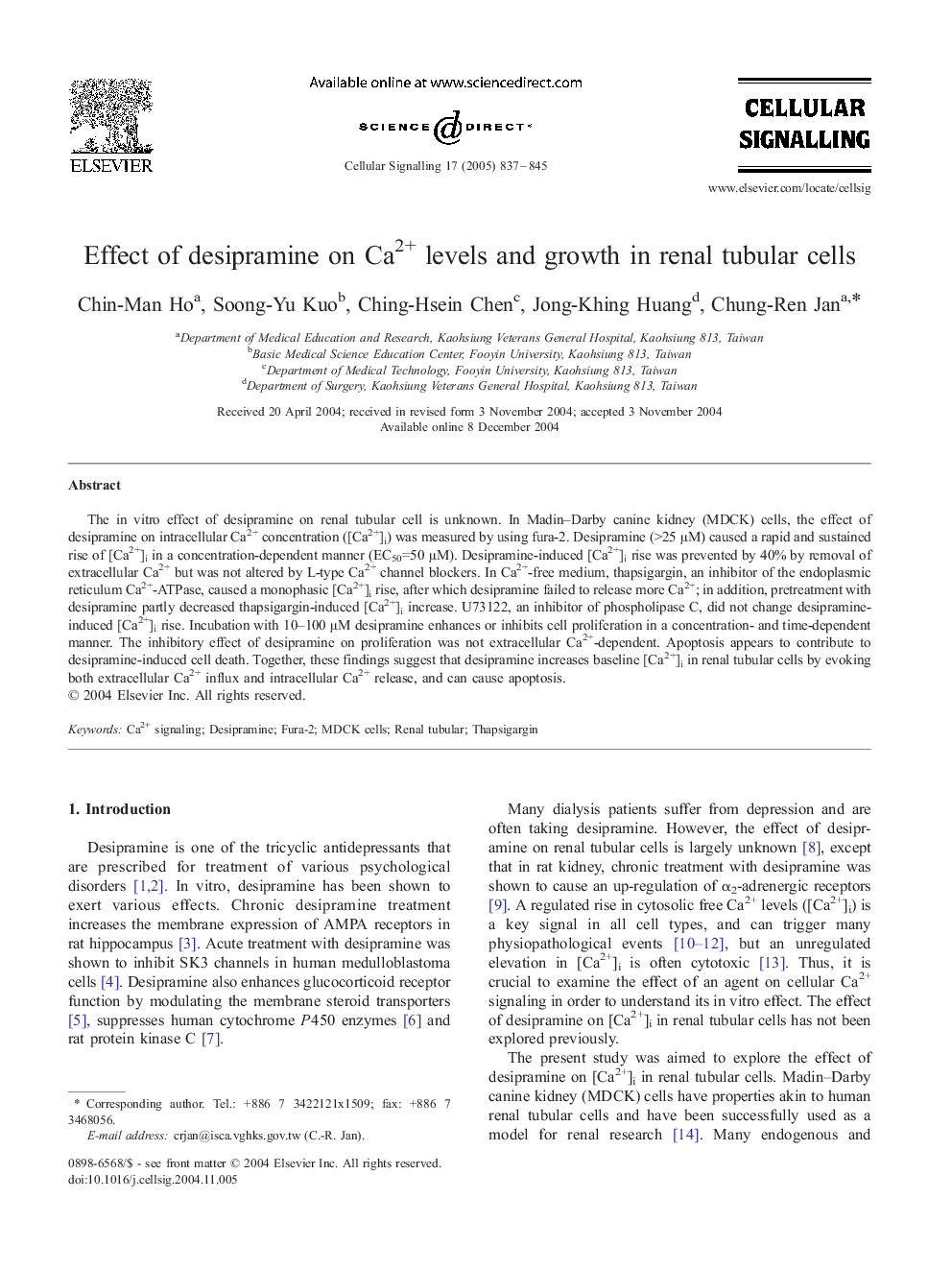| Article ID | Journal | Published Year | Pages | File Type |
|---|---|---|---|---|
| 10817111 | Cellular Signalling | 2005 | 9 Pages |
Abstract
The in vitro effect of desipramine on renal tubular cell is unknown. In Madin-Darby canine kidney (MDCK) cells, the effect of desipramine on intracellular Ca2+ concentration ([Ca2+]i) was measured by using fura-2. Desipramine (>25 μM) caused a rapid and sustained rise of [Ca2+]i in a concentration-dependent manner (EC50=50 μM). Desipramine-induced [Ca2+]i rise was prevented by 40% by removal of extracellular Ca2+ but was not altered by L-type Ca2+ channel blockers. In Ca2+-free medium, thapsigargin, an inhibitor of the endoplasmic reticulum Ca2+-ATPase, caused a monophasic [Ca2+]i rise, after which desipramine failed to release more Ca2+; in addition, pretreatment with desipramine partly decreased thapsigargin-induced [Ca2+]i increase. U73122, an inhibitor of phospholipase C, did not change desipramine-induced [Ca2+]i rise. Incubation with 10-100 μM desipramine enhances or inhibits cell proliferation in a concentration- and time-dependent manner. The inhibitory effect of desipramine on proliferation was not extracellular Ca2+-dependent. Apoptosis appears to contribute to desipramine-induced cell death. Together, these findings suggest that desipramine increases baseline [Ca2+]i in renal tubular cells by evoking both extracellular Ca2+ influx and intracellular Ca2+ release, and can cause apoptosis.
Related Topics
Life Sciences
Biochemistry, Genetics and Molecular Biology
Biochemistry
Authors
Chin-Man Ho, Soong-Yu Kuo, Ching-Hsein Chen, Jong-Khing Huang, Chung-Ren Jan,
